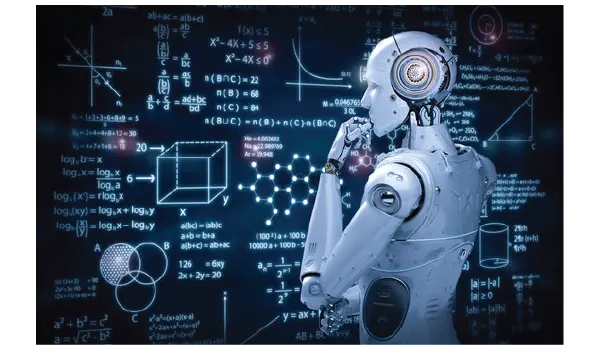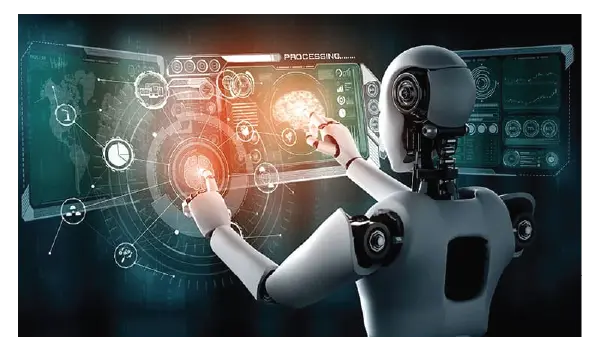Innovating the Way We Engineer: The Role of Machine Learning in Predictive Modeling

Introduction
In recent years, machine learning has emerged as a powerful tool for predictive modeling across various industries. In the field of mechanical engineering, predictive modeling plays a crucial role in improving efficiency, reducing costs, and enhancing product design. By harnessing the capabilities of machine learning algorithms, engineers are able to make accurate predictions and better understand the behavior of mechanical systems. In this blog, we will explore the benefits of using machine learning for predictive modeling in mechanical engineering, discuss the various techniques and use cases, address the challenges and limitations, and highlight best practices for implementation.
Benefits of Using Machine Learning for Predictive Modeling in Mechanical Engineering

Reduction of Downtime and Maintenance Costs
One of the key advantages of using machine learning for predictive modeling in mechanical engineering is the ability to forecast maintenance needs and prevent costly breakdowns. By analyzing data from sensors and monitoring equipment, machine learning algorithms can identify patterns and anomalies that indicate potential equipment failures. This enables maintenance teams to schedule proactive maintenance and replace parts before they fail. As a result, downtime is minimized, and maintenance costs are significantly reduced.
Improved Efficiency and Productivity
Machine learning algorithms can analyze large volumes of data and identify correlations that would be difficult for engineers to discover manually. By studying historical data on performance and operational parameters, machine learning models can optimize processes, identify bottlenecks, and suggest improvements. This helps in increasing the efficiency of mechanical systems and optimizing the performance of manufacturing processes, ultimately leading to improved productivity.
Enhanced Product Design and Optimization
Machine learning can also be used to optimize product design in mechanical engineering. By feeding historical design data and performance metrics into machine learning models, engineers can predict the performance of different design variations. This enables them to identify design parameters that have the greatest impact on performance and make data-driven design decisions. Machine learning can also be used for optimization tasks, where the model iterates through various design configurations to find the most optimal solution based on predefined objectives. This allows engineers to create more reliable and efficient designs.
Machine Learning Techniques for Predictive Modeling in Mechanical Engineering
Supervised Learning Algorithms
Supervised learning algorithms are widely used for predictive modeling in mechanical engineering. Regression models, such as linear regression, can predict continuous output variables based on input features. For example, engineers can use regression models to predict mechanical system performance based on factors such as temperature, pressure, and material properties. Classification models, on the other hand, can predict discrete categories or classes based on input features. For instance, classification models can be used to categorize mechanical components as functioning or faulty based on sensor data.
Unsupervised Learning Algorithms
Unsupervised learning algorithms are used when there is no labeled training data available. Clustering algorithms, such as k-means clustering, can group similar objects together based on their features. In mechanical engineering, clustering algorithms can be used to identify groups of similar machines or components based on their behavior or performance characteristics. Dimensionality reduction techniques, such as principal component analysis (PCA), can reduce the number of features in a dataset while preserving most of the variation. This helps in simplifying data analysis and visualization, especially when dealing with high-dimensional datasets.
Use Cases of Machine Learning in Mechanical Engineering
Predictive Maintenance in Heavy Machinery
Predictive maintenance is a critical application of machine learning in mechanical engineering. By continuously monitoring sensor data from heavy machinery, machine learning models can detect anomalies and patterns that may indicate a potential failure. This allows maintenance teams to intervene before a breakdown occurs, minimizing downtime and reducing maintenance costs. Predictive maintenance also enables maintenance activities to be scheduled based on the actual condition of the machinery, rather than on a predefined maintenance schedule.
Failure Prediction and Analysis
Machine learning techniques can be used to predict and analyze failures in mechanical systems. By analyzing historical failure data, engineers can build models that predict the likelihood and timing of failures based on various factors such as operating conditions, load, and material properties. This information can help in taking preventive measures to reduce the occurrence of failures or in planning for backup systems or redundancy to increase reliability and safety.
Product Performance Optimization
Machine learning can also be applied to optimize the performance of mechanical products. By feeding design and performance data into machine learning models, engineers can predict the performance of different design variations and optimize the design parameters to meet specific objectives. This can result in more efficient and reliable products with improved performance characteristics.
Challenges and Limitations of Using Machine Learning in Mechanical Engineering

Data Quality and Availability
The success of machine learning models heavily relies on the quality and quantity of the data used for training. In mechanical engineering, obtaining high-quality data can be a challenge as it often involves complex and expensive data acquisition processes. Moreover, some critical data may not be available due to privacy concerns or technical limitations. Data preprocessing techniques and strategies for dealing with missing or noisy data must be implemented to ensure the accuracy and reliability of predictive models.
Interpretability and Explainability of Models
Machine learning models, especially complex ones like neural networks, are often referred to as "black boxes" because they are not easily interpretable by humans. This lack of interpretability can be a disadvantage in the field of mechanical engineering, where engineers need to understand the reasoning behind the predictions made by the models. Efforts are being made to develop techniques that can provide interpretability and explainability of machine learning models in order to gain the trust and confidence of engineers.
Ethical Considerations
As with any application of artificial intelligence, ethical considerations should be taken into account when using machine learning for predictive modeling in mechanical engineering. For instance, decisions made by machine learning models should not discriminate or cause harm to individuals or communities. It is important to ensure that the machine learning models are trained and evaluated with fairness and inclusivity in mind.
Best Practices for Implementing Machine Learning in Mechanical Engineering
Data Preprocessing and Feature Engineering
Data preprocessing is a critical step in machine learning. It involves cleaning the data, handling missing values, normalizing features, and encoding categorical variables. In mechanical engineering, where data can be complex and diverse, feature engineering techniques can be used to extract meaningful features from raw data and improve the performance of predictive models.
Model Selection and Evaluation
Choosing the right machine learning model for a specific predictive modeling task is crucial. Different models have different strengths and weaknesses, and the choice of model should be based on the characteristics of the data and the problem at hand. Model evaluation techniques, such as cross-validation and metrics like accuracy or mean squared error, should be employed to assess the performance of the models and ensure their reliability.
Continuous Model Improvement and Retraining
Machine learning models should not be seen as a one-time solution. They need to be continuously monitored, evaluated, and updated to adapt to changing conditions and new data. Regular retraining of models using updated data is crucial to maintain their accuracy and effectiveness.
Future Trends and Opportunities in Machine Learning for Predictive Modeling in Mechanical Engineering
Integration of Internet of Things (IoT) and Sensor Data
As the Internet of Things (IoT) continues to expand, more and more data can be collected from sensors and connected devices. This wealth of data can be used to train and improve machine learning models for predictive modeling in mechanical engineering. The integration of IoT and machine learning presents opportunities for real-time monitoring, proactive maintenance, and optimization of mechanical systems.
Advancements in Deep Learning Techniques
Deep learning techniques, such as neural networks and convolutional neural networks, have shown great potential in various domains. In mechanical engineering, these techniques can be utilized for more complex tasks, such as image recognition, sensor signal processing, and fault diagnosis. The development of more powerful hardware and the availability of large datasets will contribute to further advancements in deep learning for predictive modeling.
Automation and Autonomous Systems
As automation and autonomous systems become more prevalent in mechanical engineering, machine learning will play a vital role in ensuring safe and efficient operations. Machine learning models can be used to predict the behavior of autonomous systems, analyze sensor data in real-time, and make decisions based on changing conditions. This will be particularly important in areas such as autonomous vehicles and robotics.
Conclusion
Machine learning has proven to be a game-changer in predictive modeling for mechanical engineering. By harnessing the power of machine learning algorithms, engineers are able to make accurate predictions, optimize performance, and improve efficiency. However, the implementation of machine learning in mechanical engineering also comes with challenges and ethical considerations that must be carefully addressed. As the field continues to evolve, there are immense opportunities for further advancements and applications of machine learning in this domain. With the right approach and best practices, machine learning can significantly impact the way mechanical systems are designed, operated, and maintained.



